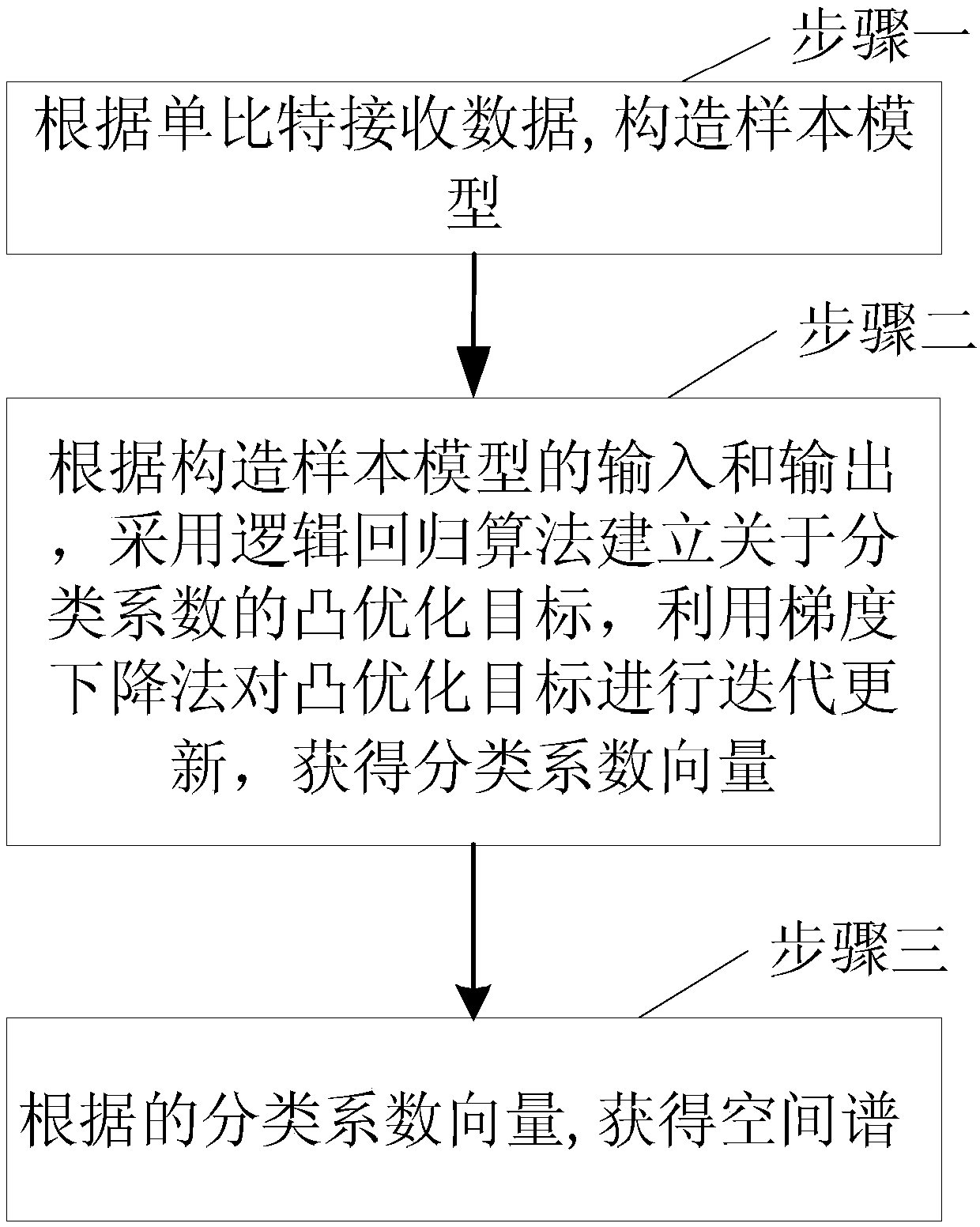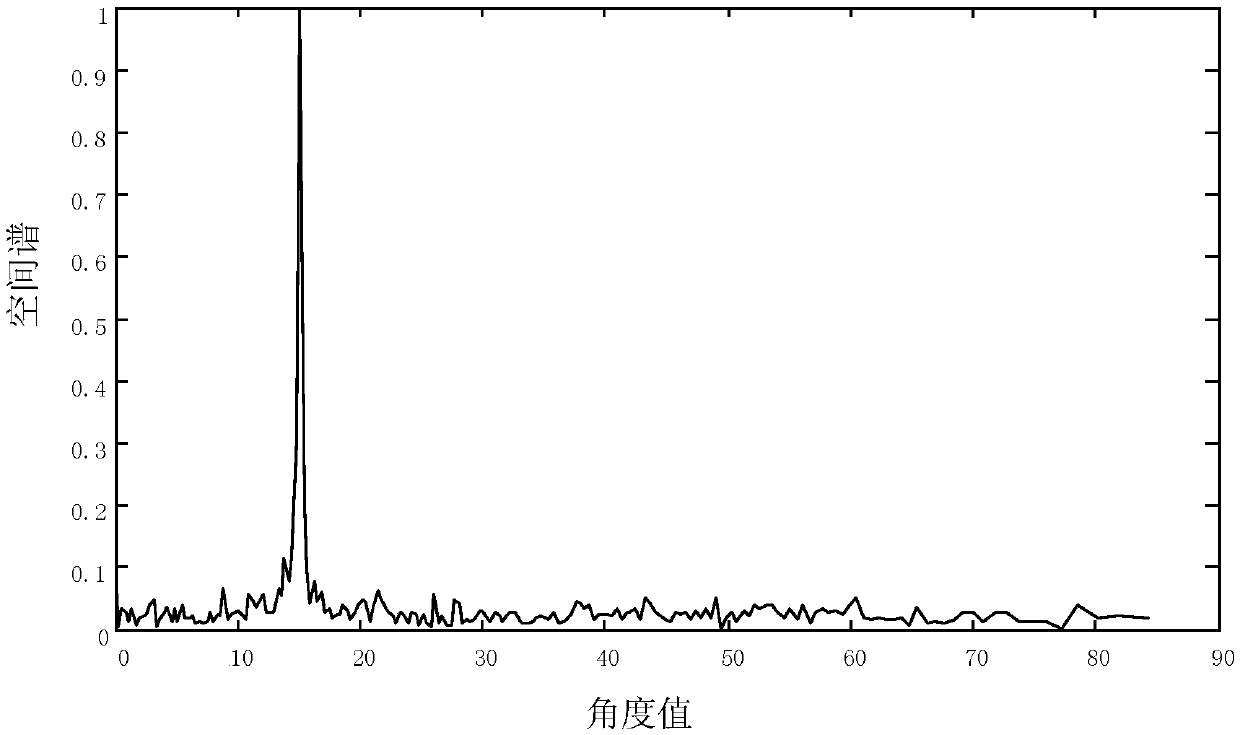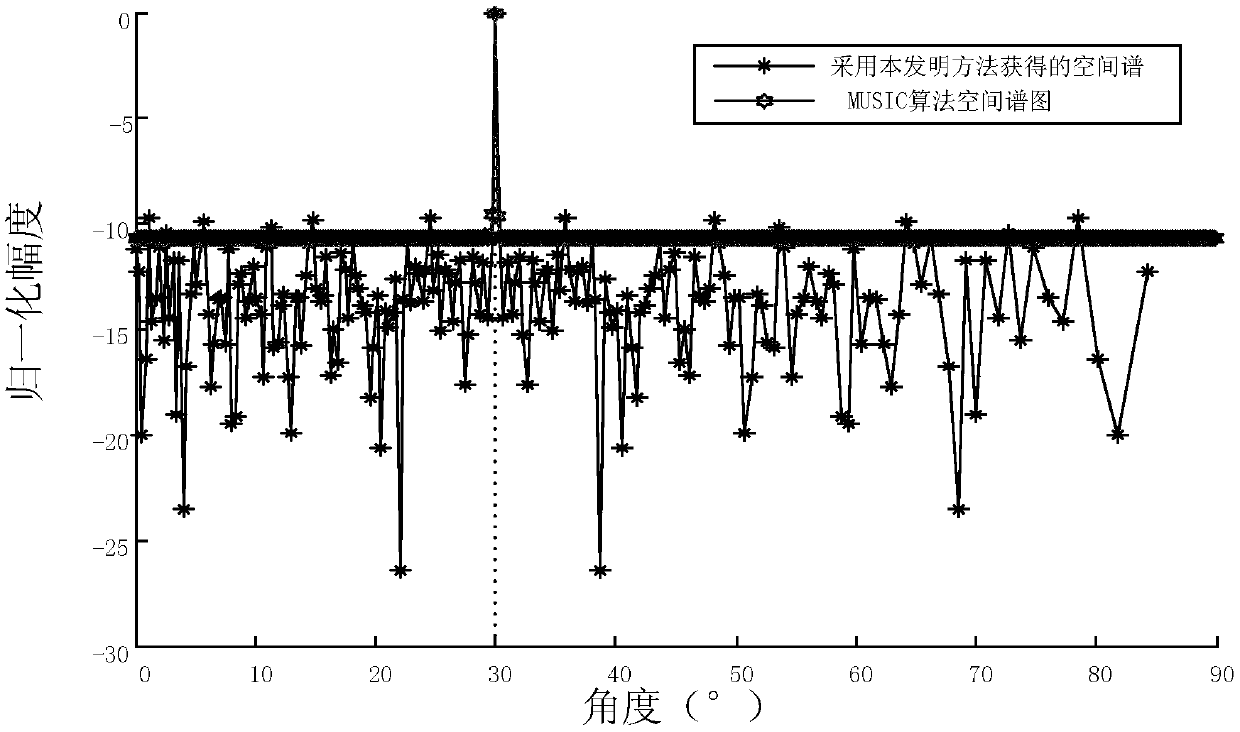A Single-bit Spatial Spectrum Estimation Method Based on Logistic Regression
A technology of spatial spectrum estimation and logistic regression, applied in the field of logistic regression, can solve the problems of large amount of calculation and poor accuracy, and achieve the effect of low requirements, simplified design, and good angle estimation accuracy
- Summary
- Abstract
- Description
- Claims
- Application Information
AI Technical Summary
Problems solved by technology
Method used
Image
Examples
specific Embodiment approach 1
[0058] Specific implementation mode one: see figure 1 Describe this embodiment mode, a kind of single-bit spatial spectrum estimation method based on logistic regression described in this embodiment mode, this method comprises the following steps:
[0059] Step 1: Construct a sample model according to the single-bit received data;
[0060]Step 2: For the input and output of the constructed sample model, the logistic regression algorithm is used to establish the convex optimization target of the classification coefficient, and the gradient descent method is used to iteratively update the convex optimization target to obtain the classification coefficient vector t, and the t=[t 1 ,t 2 ,...,t i ,...,t 2m ] T ;
[0061] Step 3: According to the classification coefficient vector t, and the following formula 1:
[0062] S i = t i +j×t i+m (Formula 1);
[0063] Obtain the spatial spectrum S=[S 1 ,S 2 ,...,S m ] T , so as to complete the estimation of the spatial spectr...
specific Embodiment approach 2
[0075] Specific implementation mode two: see figure 1 Describe this embodiment. The difference between this embodiment and the single-bit spatial spectrum estimation method based on logistic regression described in the first embodiment is that the specific process of constructing a sample model according to the single-bit received data in the first step for:
[0076] Step one, for the original sample model:
[0077]
[0078] Perform sparse representation to obtain the original sample model after sparse representation:
[0079] x=FS (Formula 3),
[0080] Steps 1 and 2, perform single-bit quantization on the original sample model after sparse representation, and obtain the model after single-bit quantization:
[0081]
[0082] In step 13, the single-bit quantized model is expressed in the real number domain as,
[0083] q=sign(Φt+e′) (Formula 5),
[0084] The single-bit quantized model is a constructed sample model in the real number domain,
[0085] in,
[0086] x∈...
specific Embodiment approach 3
[0105] Specific embodiment three: the difference between this embodiment and the single-bit spatial spectrum estimation method based on logistic regression described in the second specific embodiment is that in the second step, the output of the constructed sample model is the observation vector q, and the constructed The input to the sample model is the row of the flow pattern matrix Φ.
PUM
 Login to View More
Login to View More Abstract
Description
Claims
Application Information
 Login to View More
Login to View More - R&D
- Intellectual Property
- Life Sciences
- Materials
- Tech Scout
- Unparalleled Data Quality
- Higher Quality Content
- 60% Fewer Hallucinations
Browse by: Latest US Patents, China's latest patents, Technical Efficacy Thesaurus, Application Domain, Technology Topic, Popular Technical Reports.
© 2025 PatSnap. All rights reserved.Legal|Privacy policy|Modern Slavery Act Transparency Statement|Sitemap|About US| Contact US: help@patsnap.com



